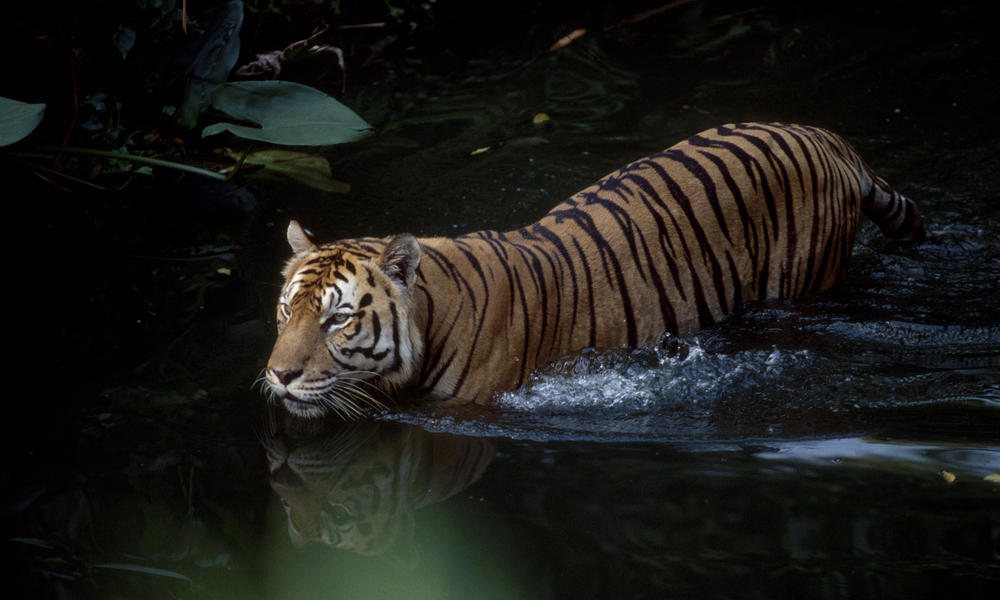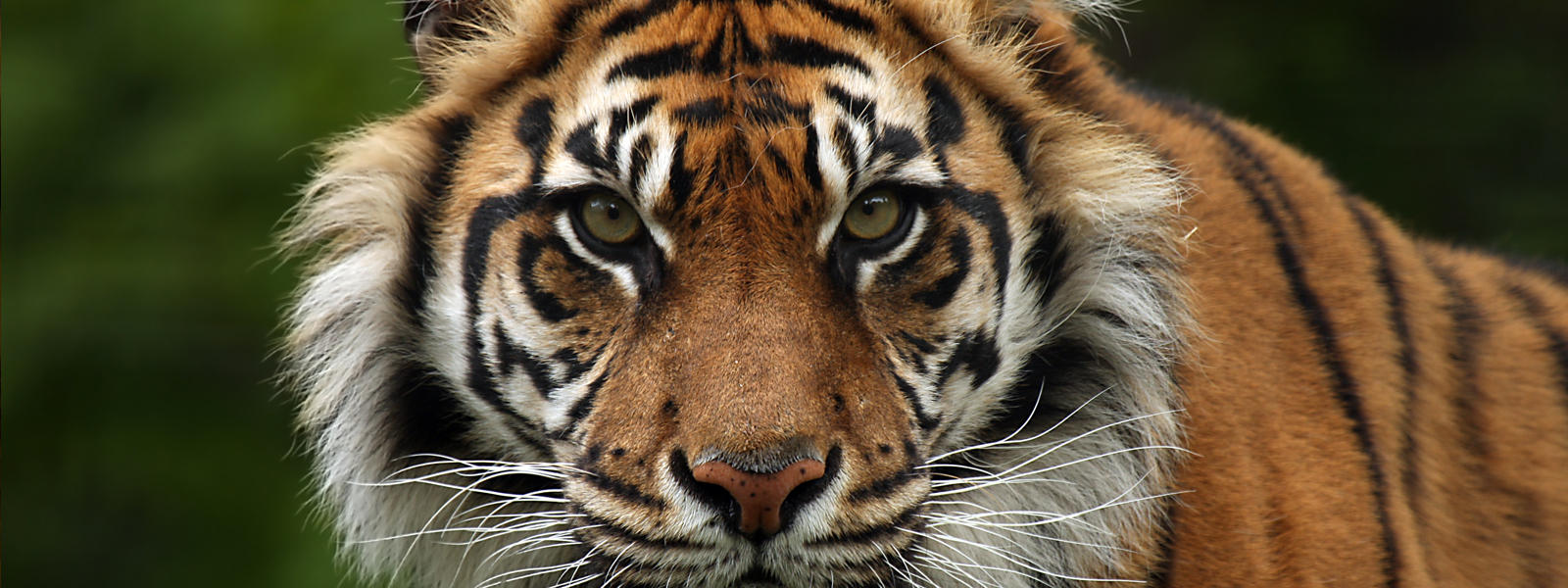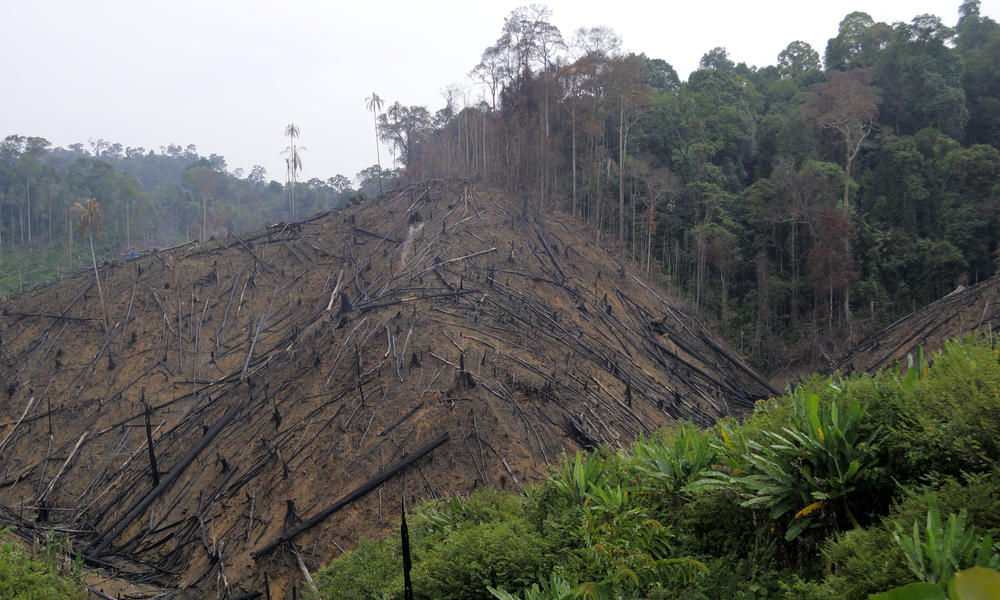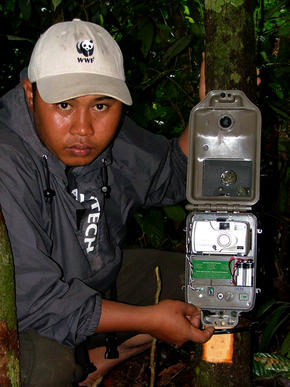SUMATRAN TIGER :
This tiger subspecies is found only on the Indonesian island of Sumatra. Less than 400 Sumatran tigers exist today. In 1978, experts estimated the population of Sumatran tigers at 1,000.
Sumatran tigers are the smallest surviving tiger subspecies and are distinguished by heavy black stripes on their orange coats. The last of Indonesia’s tigers—less than 400 today—are holding on for survival in the remaining patches of forests on the island of Sumatra. Accelerating deforestation and rampant poaching mean this noble creature could end up like its extinct Javan and Balinese relatives.
 |
| By www.worldwildlife.org |
Sumatran tigers are the smallest surviving tiger subspecies and are distinguished by heavy black stripes on their orange coats. The last of Indonesia’s tigers—less than 400 today—are holding on for survival in the remaining patches of forests on the island of Sumatra. Accelerating deforestation and rampant poaching mean this noble creature could end up like its extinct Javan and Balinese relatives.
 |
| By www.worldwildlife.org |
In Indonesia, anyone caught hunting tigers could face jail time and steep fines. But despite increased efforts in tiger conservation—including strengthening law enforcement and antipoaching capacity—a substantial market remains in Sumatra and the rest of Asia for tiger parts and products. Sumatran tigers are losing their habitat and prey fast, and poaching shows no sign of decline.
 |
| By www.worldwildlife.org |
FACTS ABOUT SUMATRAN TIGERS:
- STATUS: Critically Endangered - (Facing an extremely high risk of extinction
- in the Wild)
- WEIGHT: 165–308 pounds
- HABITATS: Tropical broadleaf evergreen forests, freshwater swamp forests and peat swamps
WHY THEY MATTER:
The island of Sumatra is the only place where tigers, rhinos, orangutans and elephants live together. The presence of the Sumatran tiger is an important indicator of a forest's biodiversity. Protecting tigers and their habitat means many other species benefit—including humans.
ILLEGAL WILDLIFE TRADE:
 |
| National Geographic Blog - National Geographic Society |
Most tigers in Sumatra are killed deliberately for commercial gain. According to a survey from TRAFFIC, the global wildlife trade monitoring network, poaching for trade is responsible for over 78% of estimated Sumatran tiger deaths—amounting to at least 40 animals per year.
 |
| Sumatran Tiger |
Despite intensified conservation and protection measures in Sumatra and the apparent global success in curtailing markets for tiger bone, there is no evidence that tiger poaching has declined significantly on the island since the early 1990s.
HUMAN-WILDLIFE CONFLICT
Habitat destruction forces tigers into settled areas in search of food and where they are more likely to come into conflict with people. Human-tiger conflict is a serious problem in Sumatra. People have been killed or wounded, and livestock fall prey to tigers. Retaliatory action by villagers can result in the killing of tigers.
 |
| By wildfact.com |
HABITAT LOSS
 |
Habitat for the Sumatran tiger has been drastically reduced by clearing for agriculture, plantations and settlement. On many parts of the island, illegal timber harvesting and forest conversion are out of control. About 16.6 million acres of forest—larger than the state of West Virginia—were lost in Sumatra between 1985 and 1997. Even protected areas face problems. In addition, forest conversion has isolated national parks from one another.
WHAT WWF IS DOING:
INFLUENCING LAND-USE PLANNING
WWF helps design land-use plans that incorporate critical wildlife habitat. Sumatra’s district and provincial governments are integrating this information into their plans, including zoning decisions and concessions for economic activities. Along with WWF’s efforts to mitigate the palm, pulp and paper, and timber industries’ impact on the island’s biodiversity, this work helps Sumatra balance environmental realities with people’s social and economic needs.
PROTECTING TIGER HABITAT
WWF successfully lobbied corporate partners and the Indonesian state government to declare the Tesso Nilo tiger landscape a protected area in 2004. It is most likely the last remaining block of lowland tropical rainforest for tigers in Sumatra. Using the momentum of the Year of the Tiger in 2010, WWF pushed for six priority landscapes for tigers to be included in the National Tiger Recovery Program, which was adopted as a global program by 13 tiger range countries.
MONITORING TIGERS
WWF is undertaking groundbreaking research on tigers in central Sumatra. Using camera traps to estimate population size and distribution as well as habitat use, we identify wildlife corridors that require protection across the central Sumatran tiger landscape.
 |
| Camera trap used to obtain images of Sumatran tigers-WWF |
WWF camera traps recorded an astounding 12 tigers in just two months in the central Sumatran landscape of Bukit Tigapuluh. Footage captured two mothers with cubs and three young tiger siblings playfully chasing a leaf. Unfortunately much of the area faces the looming threat of being cleared by the pulp and paper industry.

F Sumatran Tigers
ReplyDeleteVery interesting,yes,yes
ReplyDeleteA qué si
DeleteBlog muy interesante, con mucha información y bonitas fotos
ReplyDeleteMuy interesante
DeleteEstoy haciendo un proyecto para mis alumnos y tengo la información en este blog
ReplyDeleteSi tienes alguna duda yo te la puedo resolver
DeleteGenial.
ReplyDeleteMuy bien realizado...
Todos tenemos que evitar la destrucción de esta maravillosa especie
ReplyDelete